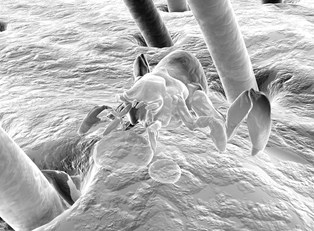Pubic lice are one of the most frustrating parasites that you can deal with. They're incredibly contagious and spread quickly, causing unsightly bumps that itch with ferocity. The best way to avoid pubic lice is to learn about how they spread and what risk factors lead to infestation.
Risk Factors
The risk factors for public lice include:
- Having sex with more than one partner.
- Touching the genitals of any person whom is infected with pubic lice.
- Having sex as an adolescent.
- Using clothing, towels, or other fabric that an infected person used previously.
- Sleeping in the same bed as an infected person or even using the same mattress after changing the sheets.
Though some of these risk factors may seem outrageous, pubic lice are fairly durable creatures. This is a problem that tends to be difficult to tackle in both the prevention and treatment of these lice.
The reason that pubic lice are so hard to remove is partially due to their eggs. The eggs tend to be resistant to most forms of drugs, and they can hatch even after being dislodged from the hair follicles that they were attached to. This allows them to survive for prolonged periods even without a host.
Minimizing Risks
The first way you can reduce your risk for a pubic lice infestation is to learn how to recognize the symptoms of an active infection. You should refrain from any contact with an infected person's pubic area. Although this won't stop pubic lice eggs from being spread, it will stop the spreading of any hatched adults.
Another way to minimize risks involves washing clothes, sheets, pillows, towels, and any other cloth materials in very hot water and then drying them on a high-temperature setting to effectively destroy the eggs and to prevent them from hatching.



